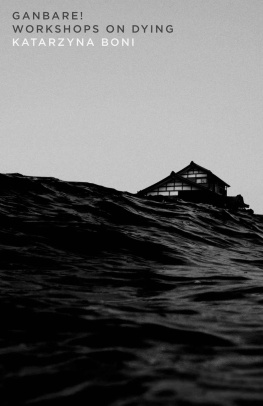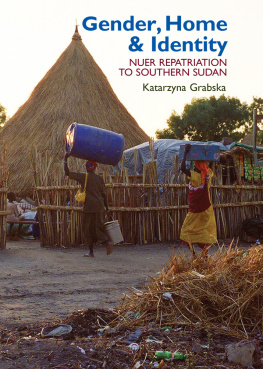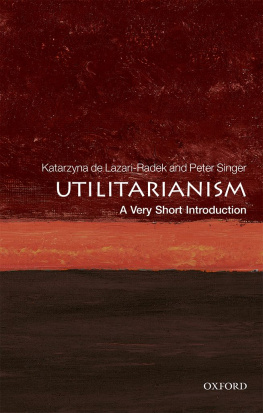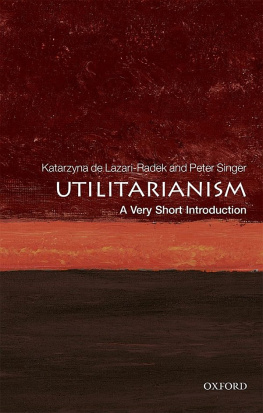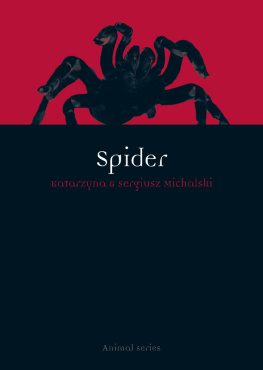Katarzyna Boni - Ganbare!
Here you can read online Katarzyna Boni - Ganbare! full text of the book (entire story) in english for free. Download pdf and epub, get meaning, cover and reviews about this ebook. year: 2021, publisher: Open Letter, genre: Detective and thriller. Description of the work, (preface) as well as reviews are available. Best literature library LitArk.com created for fans of good reading and offers a wide selection of genres:
Romance novel
Science fiction
Adventure
Detective
Science
History
Home and family
Prose
Art
Politics
Computer
Non-fiction
Religion
Business
Children
Humor
Choose a favorite category and find really read worthwhile books. Enjoy immersion in the world of imagination, feel the emotions of the characters or learn something new for yourself, make an fascinating discovery.
- Book:Ganbare!
- Author:
- Publisher:Open Letter
- Genre:
- Year:2021
- Rating:3 / 5
- Favourites:Add to favourites
- Your mark:
- 60
- 1
- 2
- 3
- 4
- 5
Ganbare!: summary, description and annotation
We offer to read an annotation, description, summary or preface (depends on what the author of the book "Ganbare!" wrote himself). If you haven't found the necessary information about the book — write in the comments, we will try to find it.
Ganbare! — read online for free the complete book (whole text) full work
Below is the text of the book, divided by pages. System saving the place of the last page read, allows you to conveniently read the book "Ganbare!" online for free, without having to search again every time where you left off. Put a bookmark, and you can go to the page where you finished reading at any time.
Font size:
Interval:
Bookmark:
Copyright Katarzyna Boni 2016
First published by Agora SA. All rights reserved.
First edition, 2021
All rights reserved
Library of Congress Cataloging-in-Publication Data: Available.
ISBN-13: 978-1-948830-42-3 | ISBN-10: 1-948830-42-6
This project is supported in part by an award from the National Endowment for the Arts and the New York State Council on the Arts with the support of Governor Andrew M. Cuomo and the New York State Legislature.

This publication has been supported by the POLAND Translation Program.

Printed on acid-free paper in the United States of America.
Cover Design by Daniel Benneworth-Gray
Interior Design by Anthony Blake
Cover Images: Makiko Omokawa and Thierry Meier
Open Letter is the University of Rochesters nonprofit, literary translation press:
Dewey Hall 1-219, Box 278968, Rochester, NY 14627
www.openletterbooks.org
KATARZYNA BONI
Translated from the Polish by Mark Ordon

Since March 11, 2001, Ganbare! has been the most commonly repeated word in Thoku, the northwestern region of Japan destroyed by the tsunami that same year. Its displayed on billboards alongside roads, printed in local newspapers, and voiced by government officials, artists, journalists, and volunteers.
All of Japan is calling: Ganbare!
Give it your all! Hang in there! Fight! You can do it!
Ganbare, Thoku!
The line between needing encouragement and needing help is very thin. As the Japanese would say: giri giri.
Sometimes, ganbare! will motivate you to act. Sometimes, when you hear ganbare!, you feel very lonely.
Give it your all. Hang in there. Fight.
During the Edo period, when Japan, having concluded that the world had nothing to offer, voluntarily sealed itself off from the outside, people would play A Hundred Tales of Horror on summer nights. Once the heat would recede and you could finally breathe normally, people all over, be it in peasant huts, merchant homes, or in castles, would get together in a dark room, with croaking frogs and buzzing cicadas in the background. The players would sit on tatami mats around a low table with one hundred lit candles. One at a time, they would tell stories of revenge-seekers from the grave, disfigured ghosts, haunted houses, mountain monsters that would kidnap women, or icy maidens who would tempt men and kill them with their frozen breath. Of phantoms tormenting the living, detached ears and bodies painted in protective spells. Or of disembodied heads flying through the night, looking for human blood to quench their thirst. When a player finished a story, one of the candles was extinguished, making more room for ghosts in the space. People believed that the ghosts would appear in their midst when the last candle went out.
In 2012, garbage started to wash up on the shores of Alaska. Among the tangled mass of Styrofoam, canisters, fishing nets, and cracked beams, beach-goers found objects from a different reality.
A plastic sandal.
A porcelain bowl.
A protective helmet.
A lighter.
A wooden figure of a warrior.
A bottle of shampoo.
A volleyball signed with blue marker.
A childs shoe, its laces still tied.
Sharpened pencils.
One freezing February morning, David Baxter found a yellow buoy in the sand that bore a black Chinese character, . He decided to find its owner.
Newspapers reported how, fifteen months after the tsunami, in the city of Minamisanriku, 430 kilometers north of Tokyo, Ms. Sakiko Miura took out a bank loan and opened a new restaurant. The tsunami had wiped out her original restaurant, Keiemeimaru, along with her house and the ocean-front districts of the city. Ms. Miura learned from a television program featuring David Baxter, who lived in Alaska, that he had found a decorative buoy with the name of her restaurant printed on it. The character painted on the buoyis the first of two kanji of her husbands name: Keigo. He died over thirty years ago, leaving Ms. Miura on her own with four children. She worked odd jobs at local restaurants. After her fortieth birthday, she took a correspondence course and finished school. When she was fifty, she opened her own restaurant, Keiemeimaru, which only served specialties from the local market: fish, salmon roe, and other seafood dishes. Ms. Miuras new restaurant is the only building standing in what was previously a residential district of Minamisanriku. Old neighbors, all scattered about in temporary housing, get together here. The yellow buoy sits on a table against the wall. Next to the buoy are flowers and a picture of David Baxter. David Baxter also found seven other people whose things he picked up at the beach. Other objects are waiting for their owners. Pictures are available on a web site called Tsunami Return. Among the recent patrons at Ms. Miuras restaurant were David and his family.
The ground is brown and sodden, gouged by muddy ruts created by passing trucks. Fences, cranes, diggers. Enormous conveyor belts and pipelines resting on five-meter-long supports bring soil to the shore from the mountains one kilometer away. A large-scale construction site.
There was a city here once.
Rikuzentakata.
There were rows of two-story houses with gardens, where plum flowers would blossom in early spring and hydrangea would appear in summer; where maple leaves would shine red in the fall (the leaves are fragile and small, different than what were used to); and where pine needles protrude from the snow cover in winter.
It was all there. Now its gone.
There was the main shopping street, with its white arcades protected from the sun and rain by a roof. The locals would call it shatto dri, from shutclosed, and dristreet. Young people were leaving for big cities. Old people no longer had the strength. More and more stores were going out of business, leaving nothing but empty pavilions with white arcades.
It was all there. Gone now.
There was a port where small fishing boats would anchor. Rikuzentakata lived off the sea. Tuna, sea bream, butterfish, amberjacks, seaweed, scallops, sea urchins. And those oysters! Meaty and full of flavor.
It was all there. Now its gone.
There was an elementary school, middle school, high school, town hall, pharmacies, a hospital, a private dental clinic, a baseball stadium, a shopping mall, restaurants, a gas station, a flower shop, railroad tracks, a train station, a small sake distillery, a baker, a tatami mat manufacturer, a coal producer, a few processing plants, a playground, and a preschool.
It was all there. Now its gone.
There were meadows on a hill encircled by dogwood and azalea, where the entire city would watch a fireworks display in the summer.
It was all there. Now its gone.
There were gates, fences, gardens, walls, roofs, streets, windows, shop displays, closed shutters, bus stops, sidewalks, and trees.
It was all there. Now its gone.
There was a city with a population of twenty-four thousand.
It was all there. Now its gone.
And there was the forest. Seventy thousand pine trees growing on the sandy shore. The smell of pine needles mixed with the sea breeze. People would make special trips here. For a walk among the trees.
Font size:
Interval:
Bookmark:
Similar books «Ganbare!»
Look at similar books to Ganbare!. We have selected literature similar in name and meaning in the hope of providing readers with more options to find new, interesting, not yet read works.
Discussion, reviews of the book Ganbare! and just readers' own opinions. Leave your comments, write what you think about the work, its meaning or the main characters. Specify what exactly you liked and what you didn't like, and why you think so.

